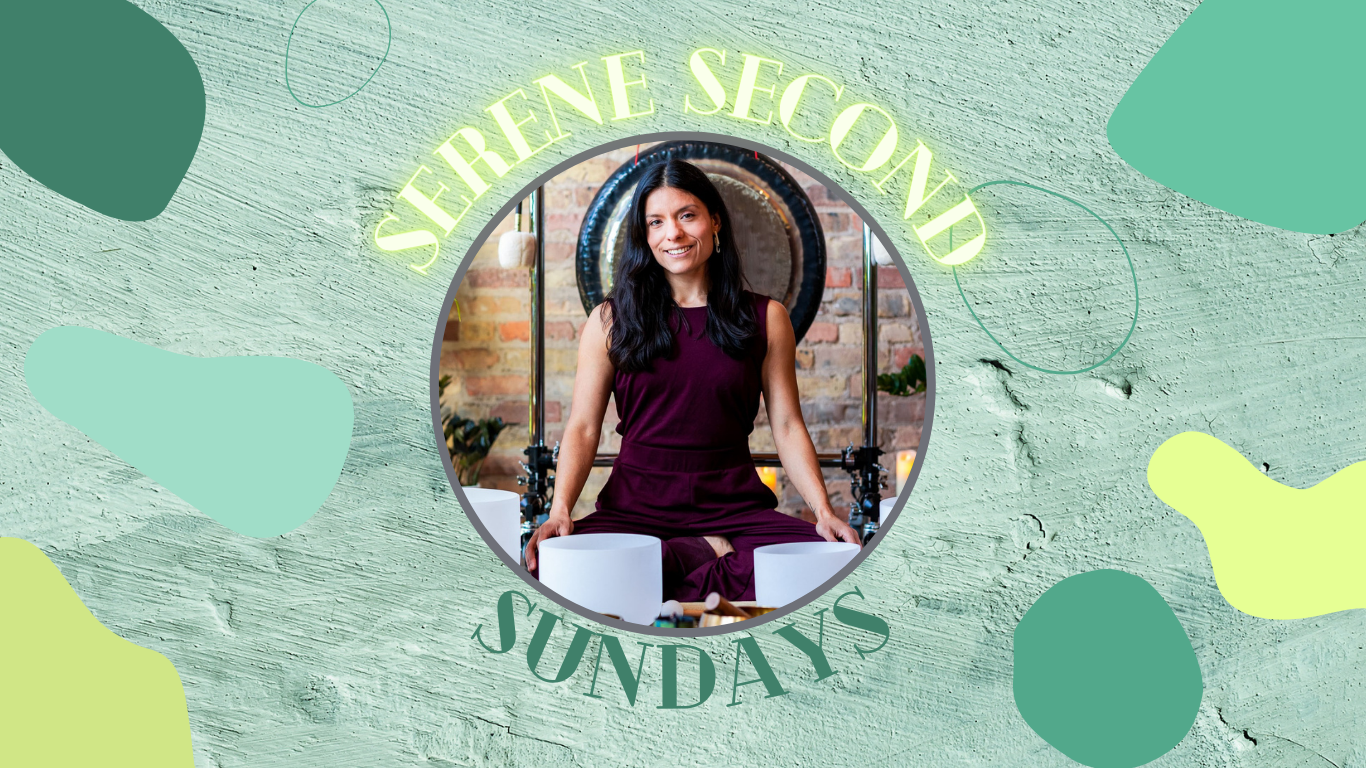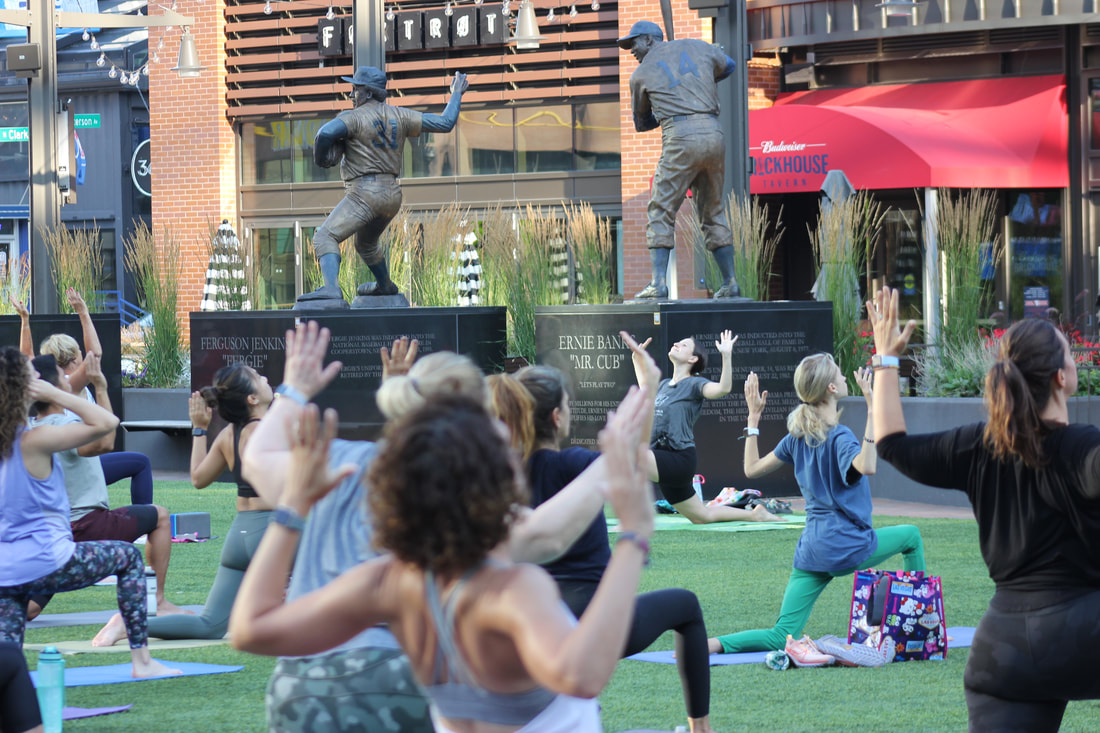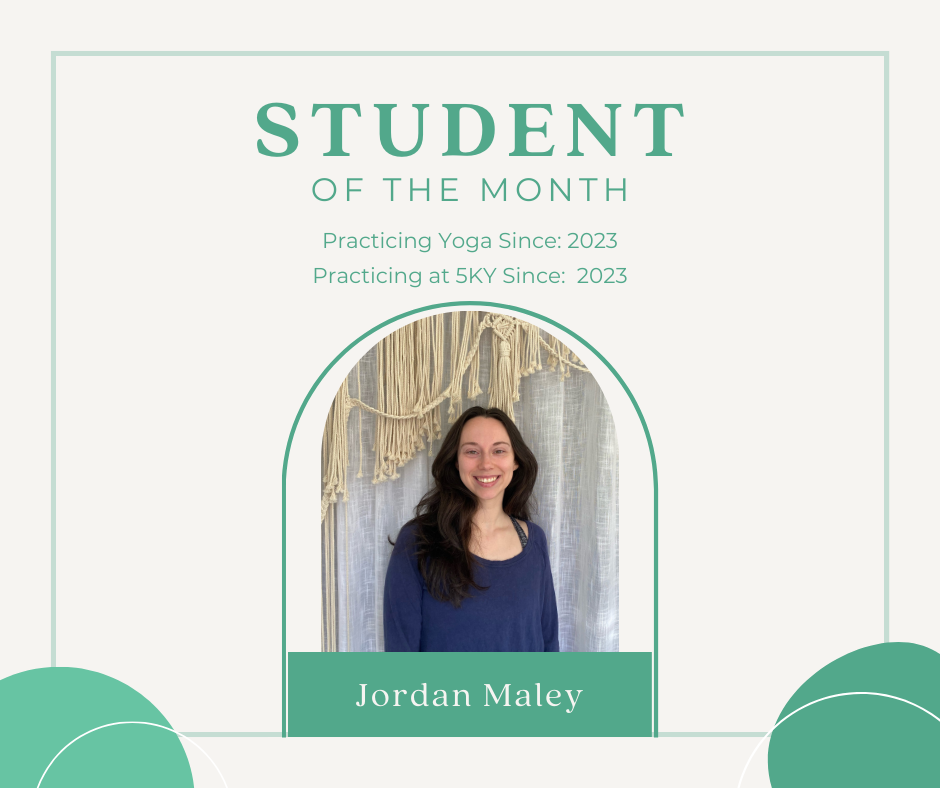|
What brought you to your yoga practice?
I had "dabbled" in yoga since I was in high school - taking classes here when the opportunity presented itself but never finding the right fit to develop into a longer commitment. It became more of a "practice" when I started classes at 5 Keys. What benefits did you notice once you started practicing consistently? Once I settled into 5 Keys and more of a routine (admittedly a very sporadic routine...), I noticed an increase in flexibility and upper body strength, lower cortisol and blood pressure; and reduced "mind clutter." What would you now tell yourself before you started practicing yoga? Keep looking for the right fit in type of yoga (I had no idea how many types there are...Hatha being my new favorite), skill level (don't hesitate to keep taking "Beginner" classes! You can always learn something new), and studio. A great teacher is always a plus but if you find a studio that is welcoming and gets you to the mat, trust that they will find the right teachers to bring everything together!
0 Comments
What brought you to yoga?
I found yoga in my mid-twenties, during a time in which I felt stressed, aimless, and disconnected from my body. Although I did cheerleading and dance throughout elementary and middle school, by the time I became a young adult, I didn’t consider myself athletic or very in tune with my body at all. I was living in my head, which, at that time, wasn’t a peaceful place to be. Through yoga, I felt connected to my body and breath for the first time, and as my practice deepened, I found both inner and outer strength and a sense of groundedness and purpose that I never knew was possible. What is your approach to teaching? My approach to teaching is accessibility and awareness. True to the concept of Svādhyāya (introspective self-study), I hope my students leave class having learned something new about themselves, whether in body or heart. I hope that my classes leave people with a stronger mind-body connection as they move about their day off their mats. I love to offer modifications, props, and variations to make yoga work for everyone, and my flows build strength in the body and offer deeper body awareness and appreciation. Why did you choose to teach at 5KY? I chose 5KY because, at first, I was struck by the studio’s inclusivity through Yoga for All Abilities®. As someone who works in education, I know how important it is to equip our little ones with self-regulation skills and body awareness so that they can carry those skills with them into adulthood. Also, as someone who’s sustained injuries in the past and had to adapt her personal practice dramatically, promoting the accessibility of yoga is important to me! There are so many people who think they can’t do yoga, but they absolutely can! But overall, I chose 5KY because of the warmth and community I found the first few times I attended class here. What makes your soul sing? My soul sings because of so many things: actually singing (sometimes well, sometimes badly, always for fun!), reading and writing poetry, immersing myself in nature, spending time with my friends and family, and, above all else, learning and growing. I love to learn about modern anatomy and yogic philosophy, and how to integrate the two to deepen my teaching skills and personal practice. I consider it a privilege to share what I’ve learned on the mat as I guide you through a practice.  Photo by Megan Menegay on Unsplash The wise man should restrain his senses like the crane and accomplish his purpose with due knowledge of his place, time and ability. - Chanakya This blog post is part of our Yoga Sutras series. Want to start at the beginning? Yoga Sutra 2.30 अहिंसासत्यास्तेयब्रह्मचर्यापरिग्रहा यमाः ahiṃsāsatyāsteyabrahmacaryāparigrahā yamāḥ Yama is non-violence, truthfulness, non-covetousness, right use of energy, and non-possessiveness At the heart of this path stands Yama, the first limb of Raja Yoga, which serves as the first half of the ethical guidelines underpinning Patanjali’s method. Yama means control or restraint in Sanskrit. These are the boundaries we place on our behavior in order to live more harmoniously with the outer world. They offer a guide to navigating the complexities of external life - interactions with others, society itself, our senses, and environment - with grace and wisdom.
Yoga Sutra 2.30 introduces us to the five Yamas: Ahimsa (non-violence), Satya (truthfulness), Asteya (non-covetousness), Brahmacharya (right use of energy), and Aparigraha (non-possessiveness). In Sutra 2.31, Patanjali calls these principles the maha vratam (great vows) that are universal and applicable to everyone regardless of their social status, the place, time, or circumstances under which they live. What brought you to your yoga practice?
Physical and mental health and to breathe better. What benefits did you notice once you started practicing consistently? More energy and focus. More peaceful state of mind. What would you now tell yourself before you started practicing yoga? It is my gift to myself every time I’m at 5 Keys. It’s the glue that holds my life together.  Photo by Joel Fulgencio on Unsplash There are no facts, only interpretations. ― Friedrich Nietzsche This blog post is part of our Yoga Sutras series. Want to start at the beginning? Yoga Sutra 2.33 वितर्कबाधने प्रतिपक्षभावनम् Vitarka bādhane pratipakṣa bhāvanam If troubled by negative thoughts, cultivate contrary thoughts. Yoga Sutra 2.33 is one of the Sutras I return to most often. In my view, this one gives perhaps the most practical advice that a practitioner can apply in their daily life.
For that reason, I’d like to move a little out of order here. We’ll study the eight limbs of Raja Yoga, one month at a time starting next month. Now let’s look at Yoga Sutras 2.33 and 2.34, which appear in the middle of Patanjali’s description of these eight components and specifically, the first two: Yama and Niyama. Have you made it to a Serene 2nd Sunday yet? See what everyone's been talking about for yourself on June 9th.
There will be no S2S in July. So make sure to sign up for June's workshop to save your spot. Otherwise, you'll have to wait until later this summer for another chance! Kick it with us all summer long at Gallagher Way! Free yoga classes next to Wrigley Field start today and continue through September. Come check out what we're all about and start your days off right this summer.
May 14th - September 26th
 Photo by Patrick Hendry on Unsplash Painful as it may be, a significant emotional event can be the catalyst for choosing a direction that serves us - and those around us - more effectively. Look for the learning. - Louisa May Alcott This blog post is part of our Yoga Sutras series. Want to start at the beginning? Yoga Sutra 2.26 विवेकख्यातिरविप्लवा हानोपायः vivekakhyātiraviplavā hānopāyaḥ The method of removing ignorance is by unceasing discerning awareness. Viveka kakhyatir, the first phrase of Sutra 2.26, is an important concept in Vedic studies. Sometimes simply called viveka, it is discernment of the difference between “the real [and] the unreal.” (Satchidananda, 294) It is wisdom.
 Photo by Matt Noble on Unsplash The "voice in my head" is not who I am. "Who am I, then?" The one who sees that. - Eckhart Tolle This blog post is part of our Yoga Sutras series. Want to start at the beginning? Yoga Sutra 2.21 तदर्थ एव दृश्यस्यात्मा tadartha eva dṛśyasyātmā The seen exists for the sake of the seer. Now we come to the reason behind all of these experiences. Why should we need to go through the ups and downs of life in the first place? Why would we need to go through pain at all?
Patanjali tells us in these next few sutras that all our experiences are here to benefit us - the individual self (atma) - by educating us on our True Nature. Whatever comes to us is a way to further improve ourselves and overcome the obstacles on our pathway to peace. This is the law of karma, which is natural cause and effect. What brought you to your yoga practice?
I had followed some YouTube videos which got me familiar with movements and names. The free Gallagher Way classes over the summer got me practicing more regularly and with an instructor. These classes were great and when they ended for the season the YouTube videos weren't enough anymore. What benefits did you notice once you started practicing consistently? My confidence has improved a lot and with that my mood has improved. Moving around for an hour a day makes me feel like I accomplished something. It has given me an appreciation for myself and my body. What would you now tell yourself before you started practicing yoga? Keep trying different instructors till you find the kind of yoga that benefits you. |
Archives
July 2024
About
Just some thoughts about yoga as I go... Categories
All
|
FIVE KEYS YOGA
|
WHAT OUR CLIENTS SAYFive Keys is fantastic! The studio is lovely and soothing, and the teachers are very caring and attentive. |
I've ... probably been to 25 different yoga studios. This is one of the most welcoming, calming spaces with very talented instructors. |
I love this yoga studio. It's a great balance of a good workout and relaxation and feels like a real community. |
An ideal studio for someone new to yoga. |







 RSS Feed
RSS Feed
